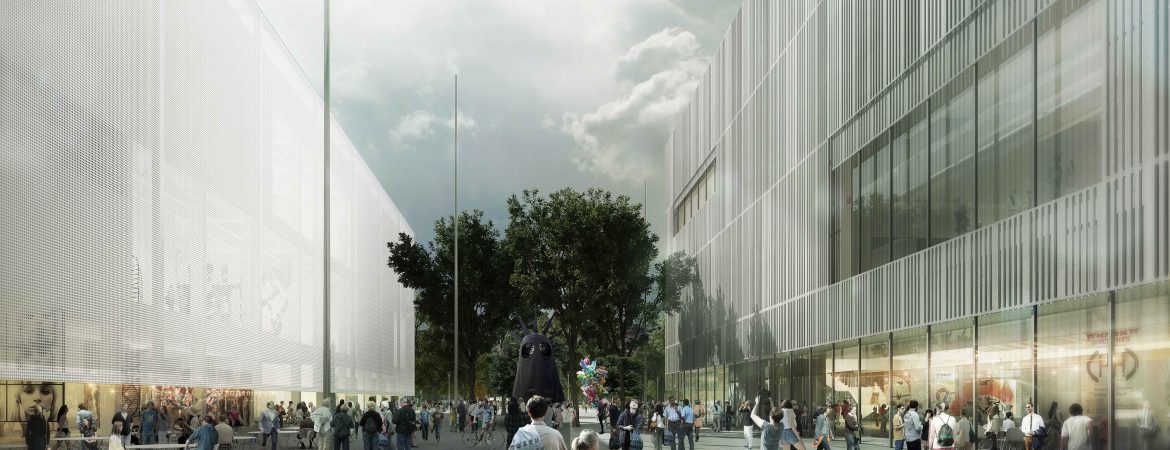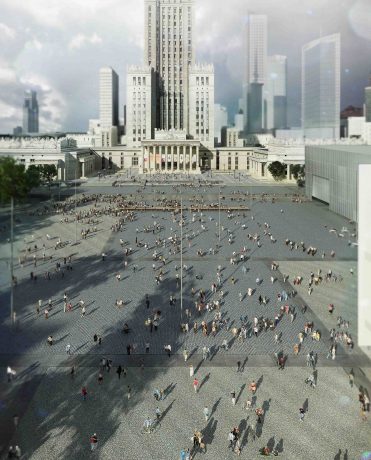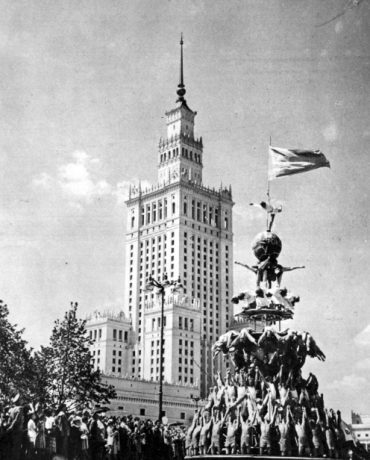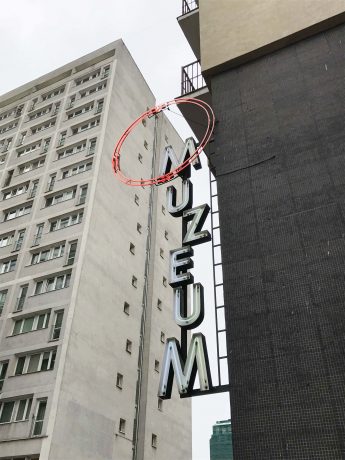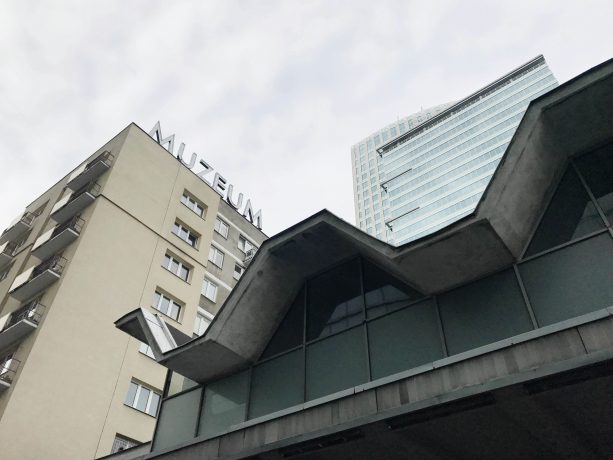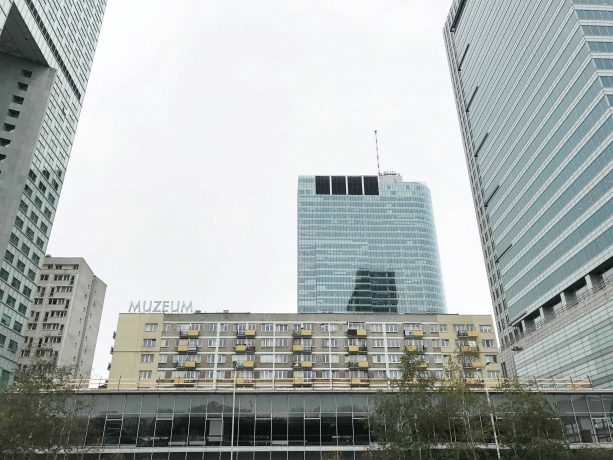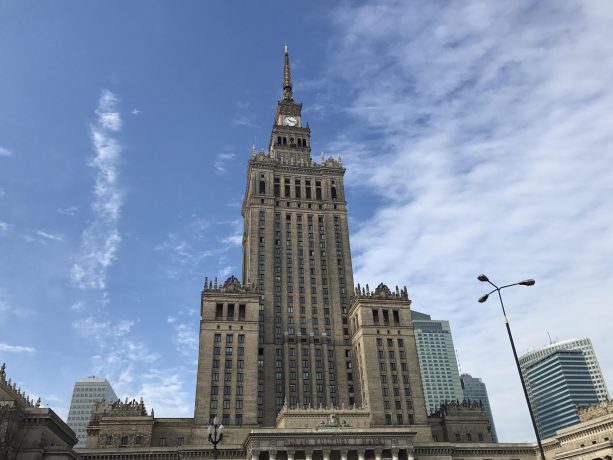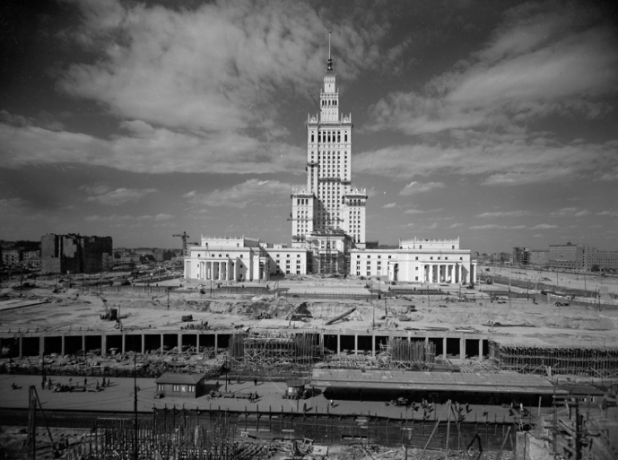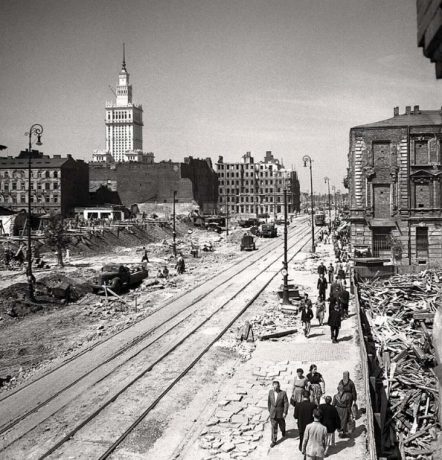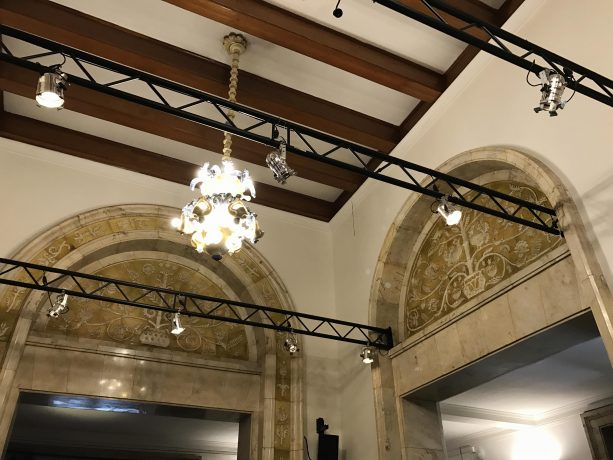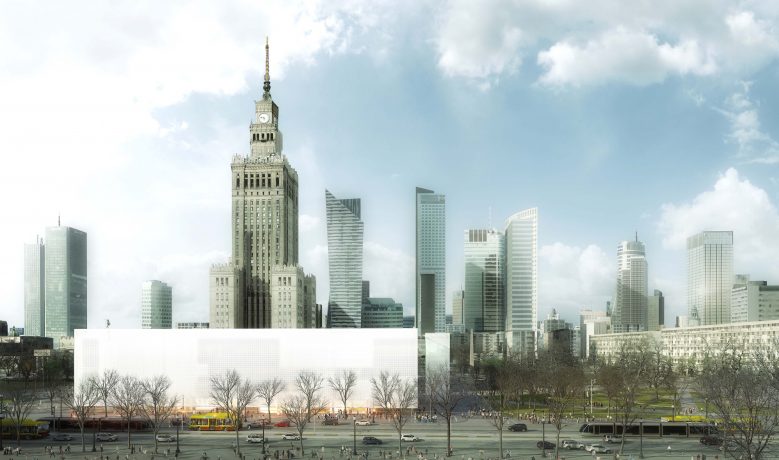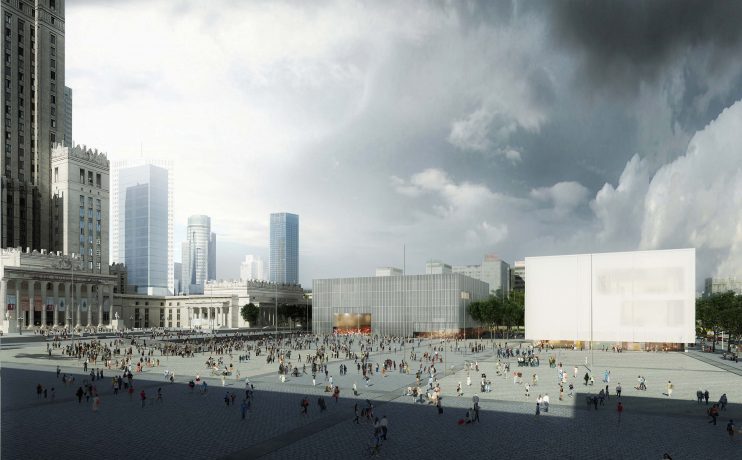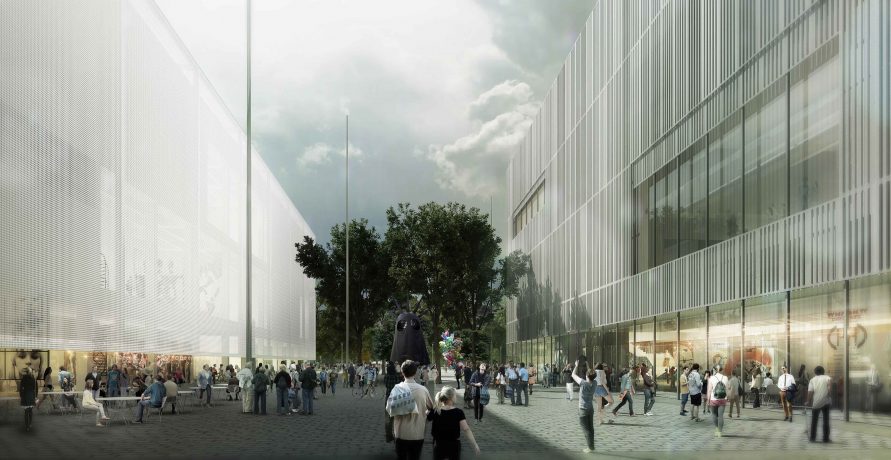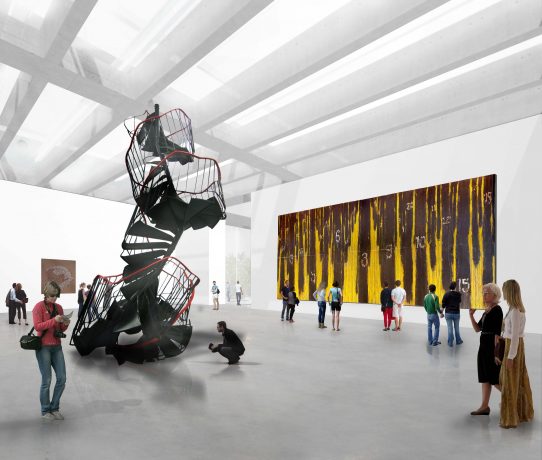The future building of the Museum of Modern Art in Warsaw, Poland, is a part of the bigger plan, which aims to revitalize the city center and strengthen the position of Poland as a country developing contemporary culture. The new complex, museum and theater, will be build next to the Soviet-era building, the Palace of Science and Culture. The building will be in a constant dialogue with the public spaces of the city and will connect memory and the contemporary state. The Museum of Modern Art, which is planned to be built in 2020, will be located in a symbolic neighborhood, which survived the World War II and was dominated by the humongous Palace of Culture during Soviet times.
The square in front of the Palace of Culture, which is nowadays used for parking, will be transformed into an area where locals can meet up, enjoy cultural events and be actively involved in discussions. In order to understand which relationship, the new museum building will develop with the city. It's worth having a look at the history of the cultural policy in Poland.
In May 2004, Poland became the part of the European Union. The intention to create the Museum of Modern Art in Warsaw was triggered by Poland's position as a new EU member. Ministry of Culture and National Heritage and the Warsaw City Council share the responsibility for running this institution. Opposing political forces were working on this project: Lech Kaczynski, who back then was the Mayor of Warsaw, and Waldemar Dabrowski, the former Minister of Culture with post-communist views. Waldemar Dabrowski envisioned the possible Bilbao effect for Warsaw. For him art was just an instrument helping to achieve certain goals. There were a lot of expectations from the upcoming museum: an iconic building, attracting tourists and stimulating creative industries. But on the other hand there was Lech Kaczynski, representative of the right wing.
The concept of his term as a mayor was to establish Warsaw as a contemporary European metropolis, which represents the values and symbols of today's Poland. He established five institutions in Warsaw, which were supposed to represent these aspirations. First and foremost was the Uprising Museum, which was an ideological project and worked wonders for the right wing party. The second one, the Jewish Museum, was representative of the history of Jewish history in Poland. The third project planned was the Museum of History of Poland (Museum of Jewish History of Poland and Museum of Polish History of Poland, which would have been complementary). Two more institutions were envisaged: Copernicus Science center, which was built and became very successful with 1 mil. visitors per year, and Museum of Modern Art.
The location of the future museum building is on the Defilad square, which was built in the 1950s together with the Palace of Culture and Science. This building, constructed in 1955, was designed by the soviet architect Lev Rudnev, who has constructed some buildings from the famous «Seven Sisters» ensemble in Moscow. Lev Rudnev had incorporated some Polish architectural details into the project. This building was a gift from the Soviet Union to the people of Poland. It was built using the Soviet plans and 3500 workers from Soviet Union. As the city's most visible landmark, the building was controversial from its inception. Many Poles initially hated the building because they considered it to be a symbol of Soviet domination, oppression and occupation. Some have also argued that, regardless of its political connotations, the building destroyed the aesthetic balance of the old city and imposed dissonance with other buildings. Despite the controversies, the Palace became an internationally recognized symbol of Warsaw.

Defilad square was used extensively by the Government of People's Republic of Poland for various propaganda parades. The square has lost its importance after the fall of communism, ironically becoming a sight of a giant marketplace. The square was always criticized for its chaotic character. The future museum building is supposed to counterbalance the Soviet-built Palace, which still dominates Warsaw's Parade Square. An empty space in front of the Palace, which was once used for political manifestations, will be turned into urban space for contemporary art and culture. The institution will be dealing with the heritage of the past and with the future, a rather ambitious plan.
The story of the new museum building begins with the first architectural competition back in 2007. Swiss architect Christian Kerez has won this competition with his extremely radical and yet simplistic project. It was an international competition with an international jury; however, the jury didn’t really get into local historical discourses and chose a very visionary project by Kerez, who was interested in structural solution for a building rather than dealing with metaphors. It was conceptual architecture more than anything else. The victory of this project caused tremendous conflict, scandal and crisis.
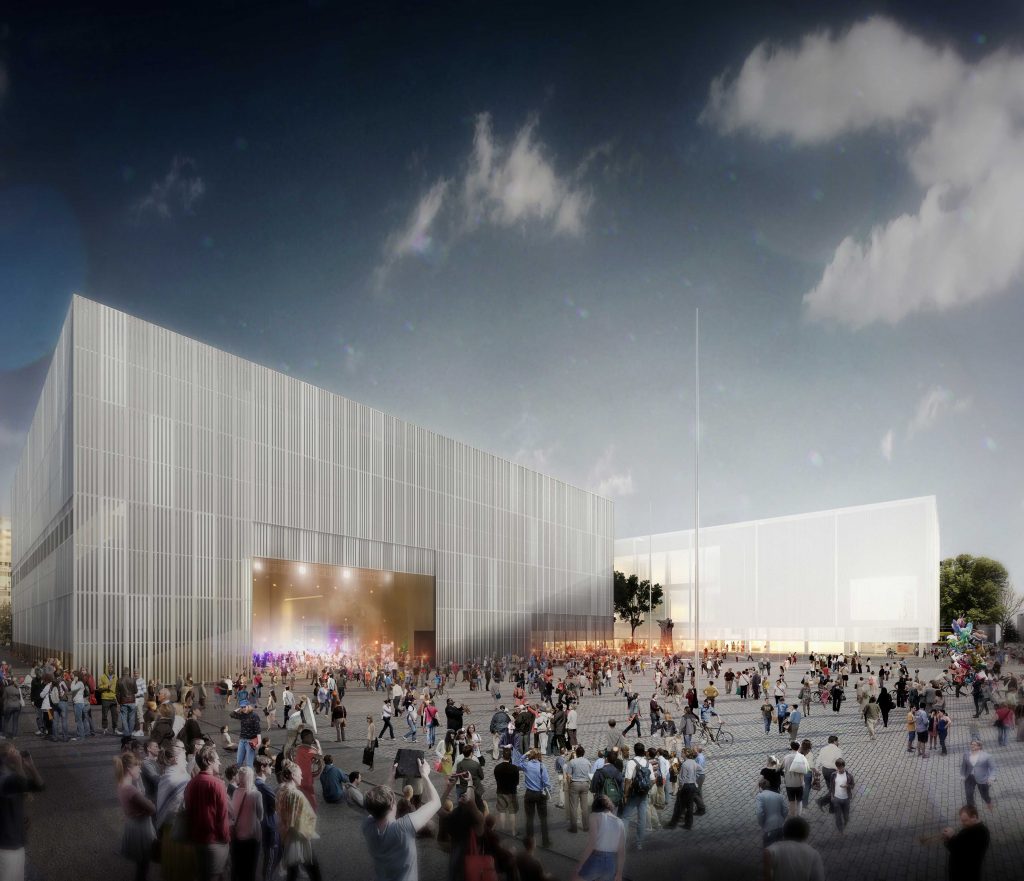
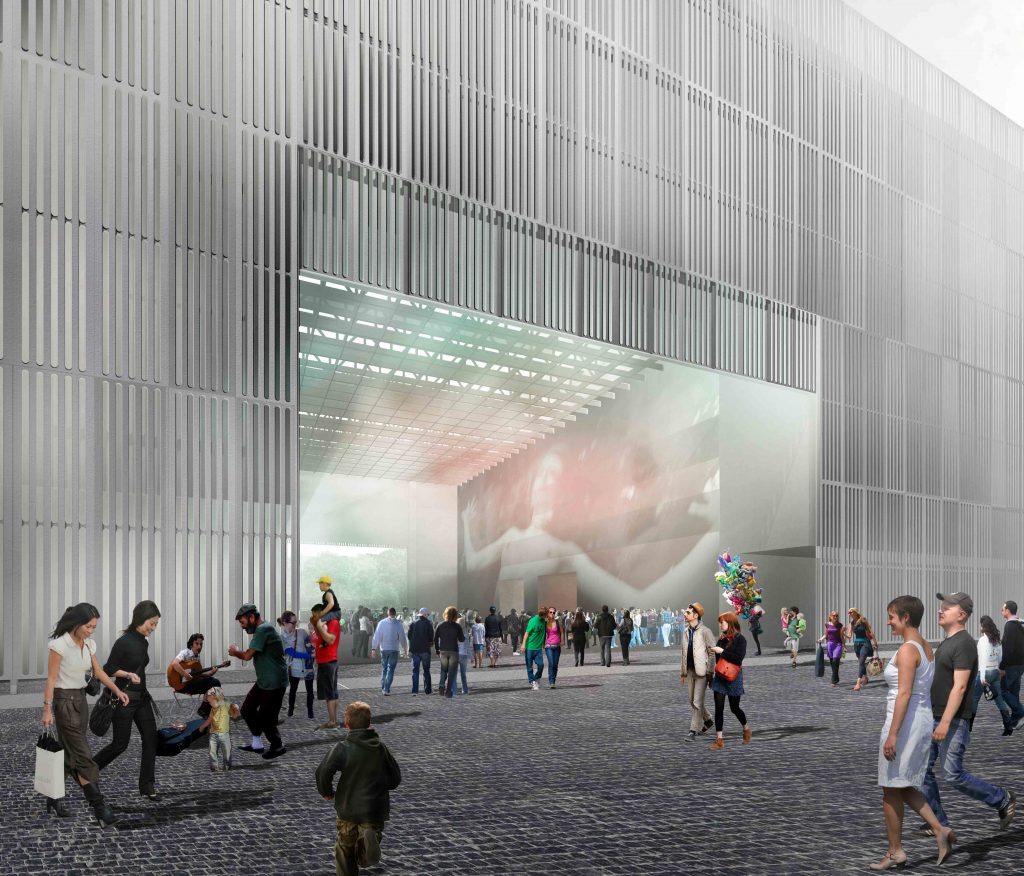
The discussion around this project was so active and engaging, that it even provoked some artists to comment on it with their artworks. Polish artist Pawel Althamer has created a piece ”Barge-Haulers” inspired by the Museum’s current situation—a constant struggle to build its own building in order to consummate its existence and secure a place for contemporary culture in society. Althamer alluded to the well-known painting ”Barge-Haulers on the Volga” (1873) by Ilya Repin, one of the first Russian realists to couple realistic representations with an affinity for the common people. Pawel Althamer’s sculpture, made using the artist’s own special technique, contains the figures of the first eleven members of the Museum team, who, like barge-haulers, are straining as if there were no tomorrow, as they drag a model of the Museum by Christian Kerez. This project is about the narrative of modernization and about how modernization happens in countries like Poland.
In Warsaw, a lot of architecture is focused on the interests of businesses and not on any other values. A clash of different mentalities has also happened in the case of Christian Kerez’s architectural concept: he proposed a minimalistic building and for the locals straight lines in architecture meant cheap retail spaces or modernism associated with communism. Thomas Phifer, an American architect, who was chosen after a second architectural pitch, is more familiar with museum buildings and with creating a space for displaying art objects. He says, that: “The museum, theater and the forum between them form an ensemble, while remaining distinct from each other and the context. The simple building masses contrast with the grand, highly-articulated Palace of Culture and Science and the commercial architecture nearby. Composed of simple, yet tactile materials and inspired by abstract works of art, the building façades manifest creative life in the city and emphasize the Museum of Modern Art and TR Warszawa’s integral role in the formation of Warsaw’s new cultural center. The buildings are radically different from the context, symbolizing this pivotal moment in the city’s history” .
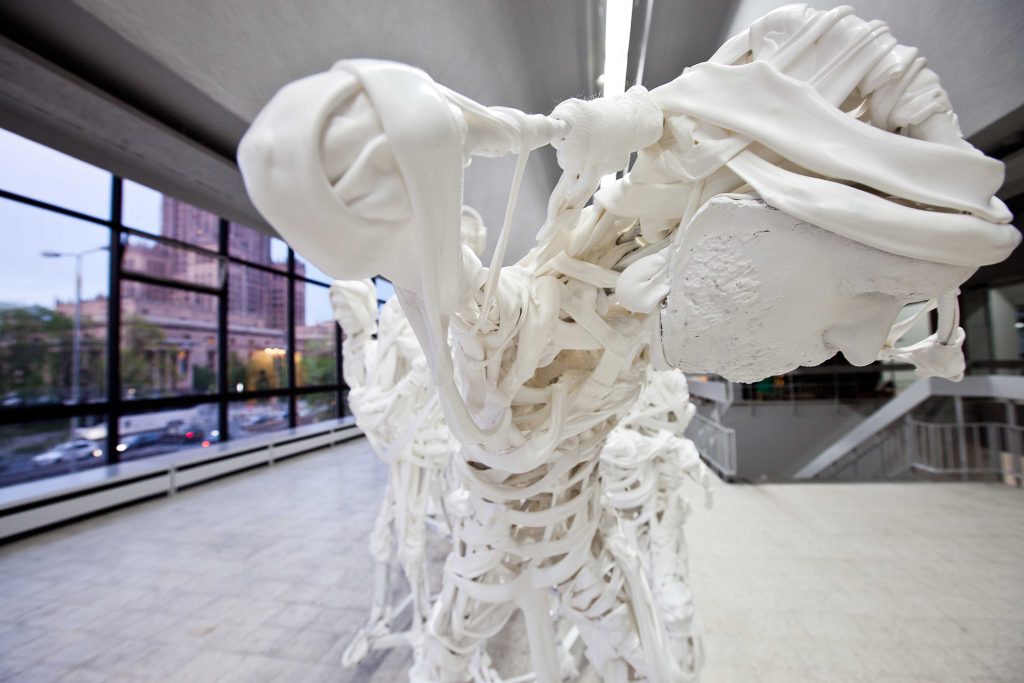
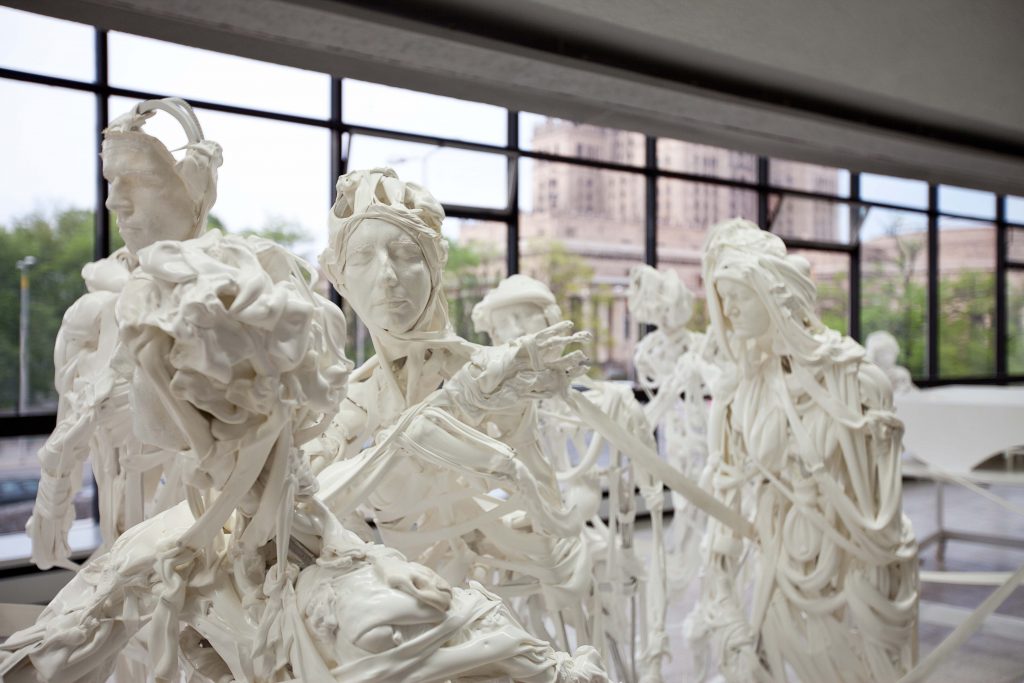
The construction of the new building is planned to begin in 2017 and both institutions (museum and theater) are scheduled to open at the end of 2020. The buildings are joined by an open forum – a welcoming, tree-lined public space that will provide a platform for outdoor artistic programs. The forum is a place for leisure and social activities, and the physical link between the two institutions and their visitors. The museum presents achievements and changes in Polish art of the twentieth and twenty-first century in an international context, creates an art collection, presents significant phenomena in the field of visual arts, film, theater and music, as well as supports exceptionally talented artists. It is a platform for dialogue between tradition and the new tendencies, which allows for constant renewal of the historical memory of the "near" and negotiates the changing social hierarchy of values in the wider culture.
The activities of the museum serve to raise the level of knowledge and interest in the arts with a references to tradition and history, and will develop and promote international cooperation with a view to forming a European cultural identity. This will apply to both the new museum and artistic and scientific exchanges with artists and people working in the area of culture - art historians, exhibitions curators, art critics - as well as participation in international museum artwork circuits and projects in the area of contemporary culture. Thanks to its unique location and historical surroundings the museum will particularly try to stimulate intercultural dialogue.
The attractiveness of the building, combined with a favorable location and dynamics of the museum, will be used to create a space for recreation and leisure for residents of and visitors to the city of Warsaw. Inspired by abstract works of art, “the building facades manifest creative life in the city and emphasize the Museum of Modern Art and TR Warszawa’s integral role in the formation of Warsaw’s new cultural center.” With a focus on the relationship between space and the public, the museum building will be accessible from all sides, and will feature open lobby and auditorium space able to hold public functions that blend into gallery suites. We can't wait to explore the museum live in couple of years!
